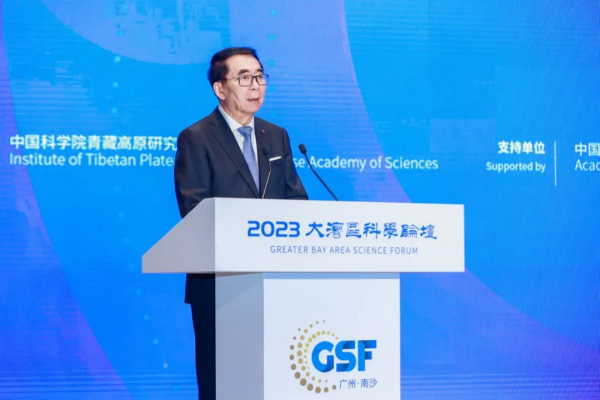Bai Chunli: GBA makes outstanding contributions to BRI
A major research achievement, Belt and Road High-Quality Development Report: Technological Innovation and Technological Cooperation, which was released during the 2023 Greater Bay Area Science Forum, comes on the 10th anniversary of the China-proposed Belt and Road Initiative (BRI).
By the end of last year, the China Association for Science and Technology (CAST) Program of International Collaboration Platform for Science and Technology Organization in Belt and Road Countries had attracted over 200 international organizations and more than 1,000 national organizations, involving more than 150 countries and regions. The Alliance of International Science Organizations (ANSO) led by China has reached 67 member units.
The report puts forward a series of goals: by 2025, breakthroughs will be made in major mechanisms of cooperation and scientific and technological cooperation’s effects on promoting the high-quality development of the BRI will be significantly enhanced; by 2035, new mechanisms and models of S&T cooperation will gradually mature, and a new pattern of S&T cooperation under the BRI will be basically formed. Key areas of cooperation include addressing climate change, ecological environment protection, combating major infectious diseases, medical assistance, development of advanced medical technology and the health industry, information technology construction, and cooperation in traditional medicine.

Bai Chunli, chairman of ANSO, president of GSF and academician of the Chinese Academy of Sciences, delivers his keynote speech at the 2023 Greater Bay Area Science Forum. [Photo/gsf.org.cn]
Bai Chunli, chairman of ANSO, president of GSF and academician of the Chinese Academy of Sciences, said: "The Guangdong-Hong Kong-Macao Greater Bay Area is not only an important starting point and hub of the 21st Century Maritime Silk Road, but also a two-way intersection of the Silk Road Economic Belt and the 21st Century Maritime Silk Road. It plays an important supportive role in the high-quality construction of the BRI."
Bai said he believes that in the future, GBA will participate in the construction of the BRI on a larger scale, conduct communication and cooperation in a wider geographical area, and achieve mutual benefit and win-win results at a deeper level.
Zhao Yuliang, director of the National Center for Nanoscience and Technology and academician of the Chinese Academy of Sciences, listed several cases of "Innovation in Silk Road" technological application demonstrations in the report.
"With the support of ANSO, Thailand and Vietnam have become important windows for the export of key air pollution control materials, devices and technologies from China, expanding China's influence in scientific and technological exports and creating significant social and economic benefits," said Zhao.
Nie Xiaowei, a researcher at the Institute of Tibetan Plateau Research of the Chinese Academy of Sciences and executive secretary-general of GSF, proposed several suggestions on the GBA to further empower the BRI: encourage GBA cities to introduce special supportive policies to strengthen S&T cooperation under the BRI; provide greater policy support in terms of funding subsidies, financing interest discounts, and customs clearance facilitation for S&T cooperation projects leading or participating in the BRI; establish a coordinated and regulatory mechanism for the participation of cities and departments in GBA in S&T cooperation under the BRI to create development synergy; establish a special development fund for high-quality development of S&T cooperation under the BRI.
Experts and scholars discussed key issues on the high-quality development of the BRI at 2023GSF's session on May 22.












